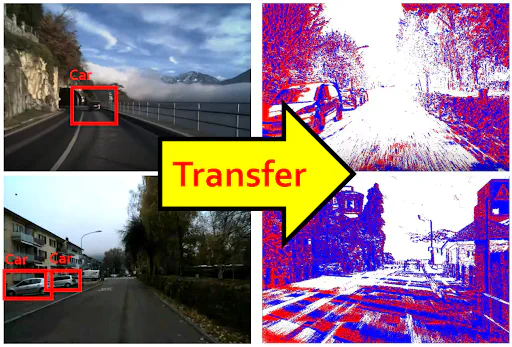Bridging the Gap between Events and Frames through Unsupervised Domain Adaptation
Jan 25, 2022·,,,·
0 min read
Nico Messikommer
Daniel Gehrig
Mathias Gehrig
Davide Scaramuzza

Abstract
Event cameras are novel sensors with outstanding properties such as high temporal resolution and high dynamic range. Despite these characteristics, event-based vision has been held back by the shortage of labeled datasets due to the novelty of event cameras. To overcome this drawback, we propose a task transfer method that allows models to be trained directly with labeled images and unlabeled event data. Compared to previous approaches, (i) our method transfers from single images to events instead of high frame rate videos, and (ii) does not rely on paired sensor data. To achieve this, we leverage the generative event model to split event features into content and motion features. This feature split enables to efficiently match the latent space for events and images, which is crucial for a successful task transfer. Thus, our approach unlocks the vast amount of existing image datasets for the training of event-based neural networks. Our task transfer method consistently outperforms methods applicable in the Unsupervised Domain Adaptation setting for object detection by 0.26 mAP (increase by 93%) and classification by 2.7% accuracy.
Type
Publication
IEEE Robot. Autom. Lett. (RA-L)